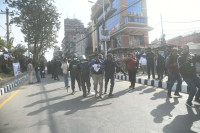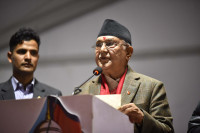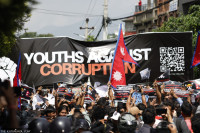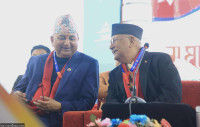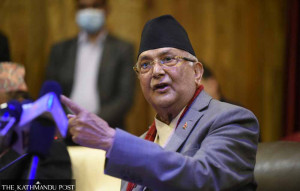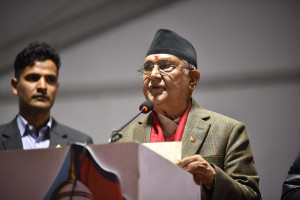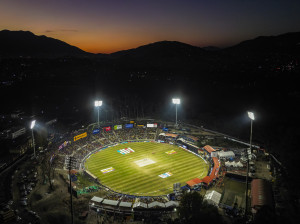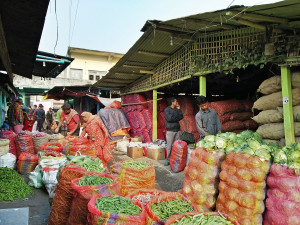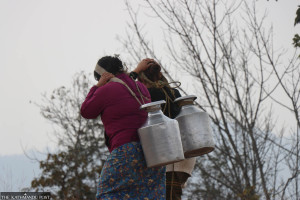Editorial
Clean up the mess
We cannot expect our players to compete internationally with poor resources at their disposal.
With the Paris 2024 Olympics concluding earlier this week, Nepali players have returned home. All seven athletes returned empty handed, having failed to break the 60-year spell of participating in Olympics without winning a medal. Those scratching their heads as to why Nepal has had a dry run all these decades needn’t look further than the Dasharath Stadium, located at the nerve centre of Kathmandu.
The country’s most famous stadium was a sight to see on Tuesday. Nepal’s Church Boys United lost to Bhutan’s Paro FC, which was a shock for Nepali fans. But the match result was hardly a topic of discussion on Tuesday evening. Rather, it was the ground of the country’s only international-standard stadium hosting an international match. It was a messy affair on the ground as the 22 boys jostled for the ball, slipping on the puddled, muddy ground all the time. As the Nepali players struggled to clinch a win against the visiting team, the photographs circulating on social and mainstream media, of the players drenched in sludge, gave an early indication that Nepal was set to lose an image war internationally.
The Japanese football icon Keisuke Honda, a member of the Bhutan squad, was right on point when he called the Bhadrakali ground a joke. It’s not clear whether Nepali authorities have taken Honda’s remark as an insult to Nepal or ignored it completely, but Honda, who has played three world cups for Japan, should be thanked for pointing out our pathetic state. The tamasha at the stadium exposed the state of our sports infrastructure and the insincerity of our authorities even when it comes to organising an international event.
Alarmingly, the situation is no different in cricket, volleyball or martial arts. Nepali youths have tremendous interest and potential in sports, in addition to a fan base envied by the world. Impressed by our young talents, the international sports fraternity has shown unprecedented interest towards Nepal in recent years. But the authorities remain as lethargic as ever even to cash in on the international goodwill.
There is no dearth of literature on the lackadaisical attitude of Nepali sports authorities. But there are some basics they should do immediately if Nepali sports is to get any better. First, the authorities must work to strengthen the financial security of the players. Only then we can expect better results from them. If the sportspeople are playing for the country, it is the country that should look after their needs. The prime ministers, ministers and other officials who compete to make big announcements after a Nepali team’s win in an international match should learn to walk the talk.
Second, the authorities should work immediately to improve sports infrastructure. If the Dasharath Stadium is muddy, the Kirtipur Cricket Ground has no light. The Mulpani Cricket Stadium has taken decades to complete, and there are hardly any decent stadiums outside the capital city, and players are deprived of training and international exposure. The authorities must therefore ensure that the sports bodies strictly follow a calendar of events throughout the year from federal to the grassroots level to ensure a holistic development of the sector. If we continue to make the players dodge the sludge on their training ground, we cannot expect them to return home with international medals.




 15.12°C Kathmandu
15.12°C Kathmandu